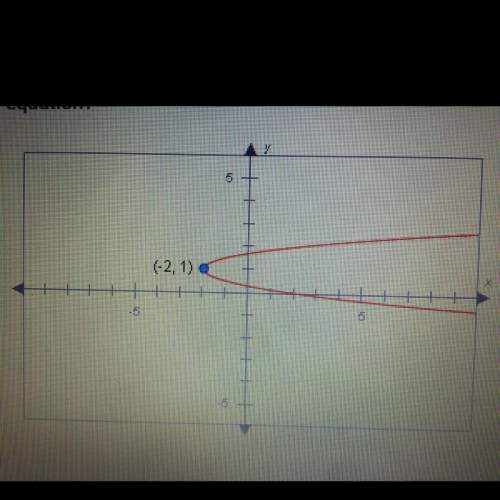
Mathematics, 02.10.2020 14:01 wowihavefun
Roxana and Paki are working in a lab to compare the average growth rates of two types of mold, Type I and Type II. They put a sample of each mold type in a Petri dish and then measure its growth every hour. The hourly growth of each mold type is modeled by the following functions, where x is time in hours.
Type I: M(x)=1.2x−1
Type II: N(x)=log1.2(x+1)
Part A: Paki looks at the average growth rate for both types of mold for the first 20 hours of the experiment. Which mold has the higher average rate of growth for that time interval?
Part B: Roxana looks at the average growth rate for both mold types for the first 3 hours of the experiment. She finds that her results are the opposite of Paki’s. Explain why that may have happened.
Select one answer that is completely correct for Part A, and select one answer for Part B. ANSWERS ARE BELOW
B: Roxana’s results conflicted with Paki’s because the average rate of change for a function shows the function’s behavior over only a specific interval. One function may grow faster for one interval, and a different function may grow faster in a different interval.
B: Roxana’s results conflicted with Paki’s because there was an error in the experiment. If one mold type grew faster for the first 3 hours of the experiment, it should have continued to grow faster for the entire experiment.
A: Type I has a higher average rate of change of 0.84 over the first 20 hours of the experiment. This is greater than the average rate of change of Type I, which is 0.64.
B: Roxana’s results conflicted with Paki’s because she made a mistake in her calculation. The results should have been the same for both intervals.
A: Type I has a higher average rate of change of 1.56 over the first 20 hours of the experiment. This is greater than the average rate of change of Type II, which is 0.84.
A: Type I has a higher average rate of change of 1.63 over the first 20 hours of the experiment. This is greater than the average rate of change of Type II, which is 0.83.
B: Roxana’s results conflicted with Paki’s because M(x) and N(x) are not very good models for the growth of each mold type, which caused unexpected results.
A: Type II has a higher average rate of change of 1.19 over the first 20 hours of the experiment. This is greater than the average rate of change of Type I, which is 0.64.

Answers: 2


Other questions on the subject: Mathematics

Mathematics, 21.06.2019 19:00, morgeron6071
Which statement best explains why ben uses the width hi to create the arc at j from point k
Answers: 2



You know the right answer?
Roxana and Paki are working in a lab to compare the average growth rates of two types of mold, Type...
Questions in other subjects:

Mathematics, 08.02.2021 23:10

English, 08.02.2021 23:10


Mathematics, 08.02.2021 23:10



Mathematics, 08.02.2021 23:10



Mathematics, 08.02.2021 23:10




